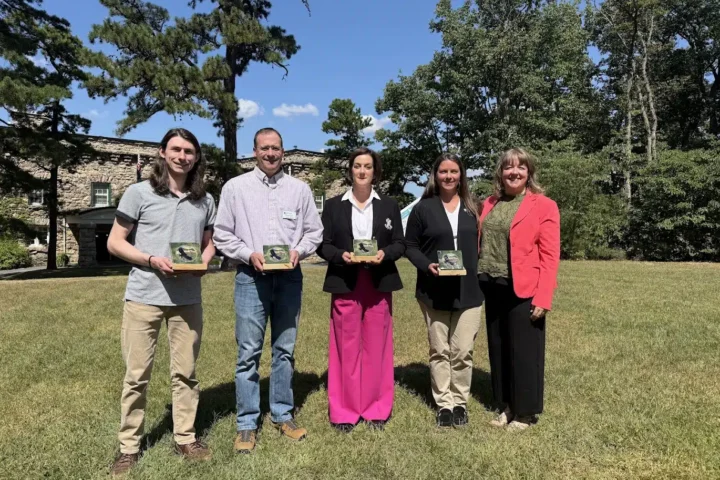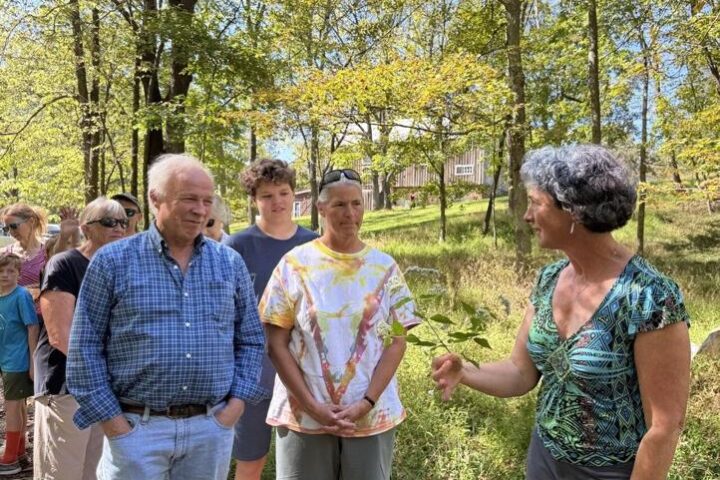
The Chestnut Hill Conservancy has formally adopted its 2025–2030 Strategic Plan, outlining a bold and actionable framework for advancing its mission to conserve and preserve the natural and built environment of Chestnut Hill and the lower Wissahickon watershed. The plan signals an expanded commitment to community engagement, public programming, and inclusive planning practices. At the same time, the Conservancy is proud to welcome three new members to its Board of Directors: Andrew Moroz, Karren DeSeve, and Henry Trapnell.
The Conservancy’s Board of Directors approved the Strategic Plan following a year-long planning process that involved the board, staff, members, community partners, and residents. Staff took a lead role in shaping the plan, which included a board retreat in the spring of 2025, stakeholder interviews, and a public survey. The process was facilitated by consultants at Schultz & Williams and informed by hundreds of responses from community members and stakeholders.
“I’m thrilled with the staff and Board’s collaborative approach to finalizing our five-year strategic plan,” said David Gest, Esq., Executive Director of the Chestnut Hill Conservancy. “The plan marks a significant step toward our evolution into a model nonprofit organization for integrated historic preservation, environmental conservation, archival management, and community engagement.”
As part of this new chapter, the Conservancy has also reaffirmed and refined its mission and vision, setting a clear direction for how it will grow in service to the broader region and deepen its impact through more inclusive and community-centered work.
- Mission: The Chestnut Hill Conservancy conserves, preserves, and celebrates history, architecture, and landscapes in Chestnut Hill and the lower Wissahickon watershed through inclusive and proactive community engagement, advocacy, and stewardship.
The core values anchor the plan and reflect priorities voiced throughout the planning process: Inclusion, Integrity, Principled Leadership, Advocacy, Stewardship, Public
Engagement and Curiosity, Celebration, and Fiscal Accountability.
These values shape the goals that follow, guiding the Conservancy’s next phase of impact and growth.
Strategic Plan Overview
The Strategic Plan reinforces the Conservancy’s core mission areas—historic preservation, land conservation, and archival stewardship—while elevating community engagement and
advocacy as guiding principles.
Key highlights from the 2025–2030 Strategic Plan include:
- Geographic Expansion: While continuing to serve its historic core of Chestnut Hill, the Conservancy will extend its outreach and collaborative projects into adjacent communities throughout the lower Wissahickon watershed.
- Historic District Advocacy: The plan outlines a multi-year initiative to explore the creation of local historic districts—a higher level of protection from the existing Chestnut Hill National Register Historic District—informed by community input, research, and technical expertise. This includes developing a replicable model that can be applied to other neighborhoods.
- Conservation Easement Innovation: The Conservancy will build on its easement program by identifying opportunities for creative new models for conservation, including the potential for easements that protect private open space with public access and ecological value at civic institutional spaces.
- Zoning Reform and Planning: In response to growing concerns over “by-right” development, the Conservancy will continue to work with the Historic District Advisory Committee (HDAC), community partners, and the City of Philadelphia to advocate for improved zoning tools, planning processes, and public input opportunities.
- Redesign of Headquarters at 8708 Germantown Avenue: The Strategic Plan includes early-stage planning for renovating the Conservancy’s headquarters to enhance public access, establish ADA compliance, and improve the use of the archives for educational and interpretive programs.
- Public Programs: The Conservancy will expand the scope and impact of its public programming to strengthen community engagement, educational outreach, and visibility. Building on successful series such as Ask the Experts, Discovering, and Night of Lights, new initiatives will be developed to reflect the Conservancy’s broader mission and geographic focus across the lower Wissahickon watershed.
- Community Archives: The Conservancy will enhance visibility and accessibility of its archives through exhibitions, digital platforms, and storytelling, in partnership with cultural and educational organizations. New initiatives will prioritize physical and digital access, interpretive resources, and public engagement to support research, advocacy, and education across the region.
The full Executive Summary of the plan is available at CHConservancy.org/About/Strategic-Plan, including a downloadable brochure and key documents.
New Board Members
The Conservancy’s Board has appointed three new Directors who bring a wide range of expertise in architecture, law, community stewardship, and sustainable investment. “We are delighted to welcome back Karren and welcome Andrew and Henry to the Board,” said Conservancy Board President Bill Webster, SEPTA’s Chief Communications Officer. “Each brings a unique blend of professional expertise and deep-rooted connection to the community, and we are excited for the experience and energy they will contribute during this next phase of our growth.”
New Directors:
- Karren DeSeve is a retired immigration attorney who previously served as a Conservancy Board member from 2004 to 2011, including as Vice President. She was a key leader during the organization’s Land Trust Accreditation Commission certification and name change. She lives in Chestnut Hill and is an active volunteer.
- Andrew Moroz is a licensed architect with more than 40 years of experience in institutional and residential design, and has served as a member of the Chestnut Hill Community Association’s Land Use, Planning, and Zoning Committee and the Conservancy’s Preservation Committee. He has lived in Chestnut Hill for over 35 years.
- Henry Trapnell is a partner at F-Prime Capital, where he focuses on growth equity investments in financial and sustainability-focused companies. He resides in Chestnut Hill in a historic residence, bringing a strong interest in architectural heritage and ecological stewardship.
Each new Director will serve a renewable three-year term. Their service began with the adoption of the Strategic Plan and will continue through its implementation phase.
Learn more about the Conservancy’s Board of Directors at: https://chconservancy.org/about/board/
Annual Meeting – Save the Date
The Conservancy anticipates holding its Annual Meeting in early February 2026. This meeting will offer members, partners, and the public an opportunity to meet the new Directors, hear updates on the Strategic Plan, and learn about upcoming initiatives and programs. The official date and invitation will be announced once confirmed.
About the Chestnut Hill Conservancy
The Chestnut Hill Conservancy is a nonprofit organization dedicated to conserving, preserving, and celebrating history, architecture, and landscapes in Chestnut Hill and the lower Wissahickon watershed through inclusive and proactive community engagement, advocacy, and stewardship. Founded over 55 years ago to protect and celebrate the area’s historic architecture, since 1990, it has protected more than 105 acres of land through its easement program, making it the nation’s first urban accredited land trust. The Conservancy maintains a professionally curated archive comprising over 66,000 items, accessible to the public, and engages the community through educational programs, advocacy, and various events. The organization has also documented thousands of structures, contributing to Chestnut Hill’s designation as a National Register Historic District.
8708 Germantown Avenue, Philadelphia, PA 19118 | 215-247-9329 | chconservancy.org




